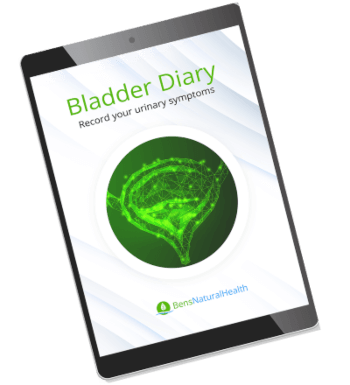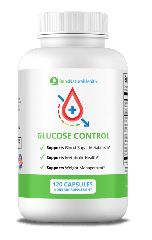- Q: What causes a weak urinary stream?
- Q: What health problems could a weak urine stream be a symptom of?
- Q: How can I increase my urine flow if I have a weak urine stream or urinary hesitancy?
- Key FAQs about Weak Urine Stream
- Conclusion
- Our Medical Review Process
- Our Editorial Guidelines
- Medical Disclaimer
- Source
Problems with urine flow are common. Some people experience difficulty starting or maintaining urine flow. In other words, they have urinary hesitancy. While men and women alike can have a weak urine flow, the condition is most prevalent in elderly males.
Considering the immense importance of proper urine flow for our health, in this post, we will discuss the background of the weak urine stream and how to improve urine flow. Does it tell us something about our health? Why does it happen? How to remedy it naturally? Read on to learn more.
To ensure we provide the most accurate and up-to-date information regarding weak urine stream, we interviewed Dr. Ilija Kelepurovski, a licensed medical doctor with expertise in urinary health. Dr. Kelepurovski addressed direct questions about what causes a weak stream of urine, what is considered a weak urine stream, and common concerns such as, “why is my urine stream weak?” His comprehensive answers help clarify the underlying mechanisms, clinical significance, and management strategies for both men and women experiencing a weak urine stream. The insights offered by Dr. Kelepurovski are based on his professional experience and specialized knowledge, shared in response to our targeted questions during the interview process.
All content presented in this article has been thoroughly reviewed and is grounded in medically sourced information, which enhances the reliability and trustworthiness of our discussion on weak urine stream causes and related urinary health issues, including weak urine stream after prostatectomy and weak urine stream in women.
Get Your FREE PSA Lowering Diet Plan!
- Naturally lower PSA levels
- Reduce nighttime trips to the bathroom
- Enjoy better bladder control and urine flow
Q: What causes a weak urinary stream?
Dr. Kelepurovski answers: A weak urine stream is a very common concern, especially as men age. The most typical cause is benign prostatic hyperplasia (BPH), also known as an enlarged prostate. This noncancerous increase in prostate size can compress the urethra, the tube that carries urine from the bladder, resulting in urinary symptoms like urinary hesitancy, weak urine stream, nocturia (frequent urination at night), urge incontinence, and the feeling of incomplete bladder emptying. Statistics show BPH affects about 90% of men by age 85 and more than 14 million men in the United States alone suffer from this issue, with worldwide numbers exceeding 30 million men showing symptoms of BPH.The prevalence of BPH increases with age, affecting approximately 50% of men aged 51-60 and up to 90% of men more than 80 years old.
Other than BPH, a weak urine stream in men can result from urinary tract infections or prostate infections, both of which inflame and irritate urinary tissues, leading to symptoms like slow or hesitating flow. If you’re asking “why is my urine stream weak” or noticing sudden changes, it is essential to consider underlying factors such as infections, inflammation, or other blockages within the urinary tract.
There are also conditions like urethral stricture and neurological diseases that interfere with bladder muscle coordination that are causing LUTS(Lower Urinary Tract Symptoms). There are also side effects of certain medications, especially anticholinergics or drugs with anticholinergic potential, opioid analgesics, non-steroidal anti-inflammatory drugs, antidepressants, first-generation antipsychotics (classic neuroleptics) and selected cardiovascular drugs (beta-blockers, thiazides potassium-sparing diuretics, statins), as well as others—may increase the risk of developing urological disorders, such as urinary retention or incontinence, urinary tract infections, urolithiasis, erectile dysfunction in men.
Identifying the primary cause is key to restoring normal urinary flow and preventing future complications.
Q: What health problems could a weak urine stream be a symptom of?
Dr. Kelepurovski answers: It’s important to recognize that a weak urine stream is rarely an isolated issue, it often signals an underlying health condition. If you’re experiencing these symptoms and wondering “what causes a weak urine stream” or “what is considered a weak urine stream,” several medical conditions should be considered, as they may require prompt medical attention and treatment.
Beyond an enlarged prostate, weak stream of urine or urinary hesitancy can indicate:
Uncommon problems
Some less common but significant issues include:
- Posterior urethral valves: a congenital abnormality in the pediatric population caused by extra flaps of tissue in the urethra, blocking the flow of urine and leading to urinary obstruction symptoms from a young age leading to hydronephrosis and kidney failure if not diagnosed in time.
- Meatal stenosis: an abnormal narrowing of the external opening of the urethra (the meatus) which can seriously impact bladder emptying and contribute to a weak urine stream and other symptoms.
Infection
Both men and women should know that infections are a frequent reason for weak urine stream. These can include:
- Prostatitis: This is an inflammation and swelling of the prostate gland, typically due to bacterial infection. Acute bacterial prostatitis can cause a sudden onset of difficulty urinating, pain or burning during urination, frequent urination at night, abdominal pain, and even painful ejaculation. Chronic urinary retention may occur if prostatitis isn’t managed appropriately.
- Urinary tract infections (UTIs): UTIs aren’t just a female issue; they can affect men as well, particularly with a weak bladder neck or after surgery. Frequent, urgent urination and incontinence are typical symptoms.
Additionally, sexually transmitted infections (STIs) may lead to painful urination and weak urine flow. Addressing these infections promptly is vital to preventing further urinary symptoms and complications.
Nerve damage and nervous system disorders
Nerve impairment commonly contributes to urinary flow problems. Conditions like diabetes can damage the nerves that control the bladder, resulting in difficulty starting urination, a weak stream of urine, incomplete bladder emptying, and even dribbling after peeing. Other neurologic disorders, such as multiple sclerosis, spinal cord injuries, and certain brain infections, can also disrupt normal bladder function. Even events such as childbirth and accidents can have a similar effect.
Urethral stricture
Urethral stricture refers to scarring that narrows the urethra, restricting urine flow and sometimes causing infection or inflammation. If left untreated, it may develop into chronic urinary retention or repeated urinary tract infections. Typical symptoms of urethral stricture are reduced urine flow, frequent need to urinate, straining during urination, and a spraying or split urine stream.
Common causes of urethral stricture include radiation therapy, iatrogenic injury (like endoscopic procedures), sexually transmitted infections, long-term catheter use, prostate cancer, urethral cancer, pelvic trauma, and even procedures to treat enlarged prostate.
Paruresis (Shy Bladder Syndrome)
Infrequent urination in the presence of others(Shy Bladder Syndrome) is a condition of social anxiety whereby an individual literally cannot urinate in the presence of other persons regardless of how full they might feel. The disorder is quite common (estimated to afflict around 20 million people in the U.S.) and may compel the sufferer to avoid public restrooms, travel, and work situations, or require the individual to severely limit fluid intake. The anxiety, which is usually triggered by unpleasant restroom experiences, creates tightness in the pelvic floor muscles causing an obstruction to the flow, with no form of physical obstruction. The most empirically validated intervention is cognitive-behavioral therapy with graduated exposure, which aims to train the patient’s body to relax in environments that are progressively more challenging; research indicates that most patients (approximately 80%) achieve clinically significant improvements.
Surgery
Weak stream or hesitancy may follow post-surgical surgery of the lower genitourinary tract, whether for a male or female patient. The range may be quite broad (i.e., between 5% and 70%) in prevalence because it is highly dependent on what type of surgical procedure performed and the pertinent patient factors. However, the higher risk is passed after operations of the prostate (TURP and prostatectomy), the pelvic operations such as hysterectomy or those related to colorectal/gynecologic cancer surgery, and those concerning urethral repairs for strictures. Well-known problems in this context involve “nerve injury” (trauma, stretch, ischemia) and “scarring or stricture”, while general or spinal/epidural anesthesia can “emporarily” disrupt bladder signaling. Anesthesia-related issues usually improve within “24-48 hours” (often over several days to weeks), but structural damage may persist and require targeted treatment (medications, pelvic floor therapy, dilation, or further surgery). Early recognition and management improve outcomes.
Medications
Any medication can bring side effects, including some that could have an effect on the urinary tract; hence, these side effects are less discussed in public. Various classes of drugs can heighten the risk of problems such as difficulty initiating urination or emptying the bladder completely (urinary retention), leakage (incontinence), urinary tract infections, kidney stones, erectile dysfunction, or rarely, scarring surrounding the kidney (retroperitoneal fibrosis).
The list of commonly guilty medicines includes anticholinergics (and medications with anticholinergic activity), opioids, NSAIDs, antidepressants, first-generation antipsychotics, and certain cardiac or blood-pressure medications (e.g., some beta-blockers, thiazide or potassium-sparing diuretics, statins). If you develop new urinary symptoms after a medication has been changed, tell your clinician—many of these problems will improve with a dose adjustment, a change in medications, or by adding in a simple supportive treatment.
Bladder outlet obstruction
Bladder neck issues constrict the outlet through which urine leaves the bladder and cause a weak, stuttering stream or straining. Two main categories: stenosis/contracture (a scar that typically develops weeks–months following prostate/bladder/pelvic surgery or radiation) and primary bladder neck obstruction (PBNO) where the muscle at the bladder neck “does not relax” normally. Typical symptoms include poor stream, hesitation, feeling of not emptying completely, and sometimes UTIs or nocturia; in severe instances, it leads to painful retention or pain in the flank/back. Doctors diagnose using a test of urine, plain flow and “residual urine” test, and typically a quick scope (cystoscopy). It is treated individually: scars are “dilated” or relaxed with a brief endoscopic cut PBNO typically starts with alpha-blocker tablets, incision if needed. If improvement is not seen or worsens, you cannot urinate, or fever, hematuria, or recurrent infections, have a urology follow-up.
Get your FREE bladder diary
- Daily bladder diary
- Better understand your urinary symptoms
- Step-by-step guide
Q: How can I increase my urine flow if I have a weak urine stream or urinary hesitancy?
Dr. Kelepurovski answers: If you’re searching for “home remedies for weak urine stream” or want to know “treatment for weak urine stream,” it’s reassuring to know there are both natural and medical strategies for improving urinary flow, depending on the underlying cause.
Natural remedies for chronic urinary hesitancy
Staying proactive about chronic urinary hesitancy is key to maintaining urinary tract health and preventing major complications. Besides the specific interventions your doctor may recommend, incorporating some healthy habits can naturally increase urine flow and strengthen bladder control. These include:
- Kegel exercises for pelvic floor strengthening, which help in both men and women suffering from weak urine stream.
- Staying physically active, avoiding a sedentary lifestyle reduces the risk of bladder dysfunction.
- Meditation and relaxation techniques can temper the anxiety that sometimes inhibits normal voiding.
- Not delaying urination, go when you first feel the urge and attempt to completely empty the bladder each time.
- Avoiding bladder irritants such as alcohol and caffeine.
- Maintaining a healthy weight, as obesity is closely linked to lower urinary tract symptoms.
- Warm baths or showers can relax the pelvic muscles and make urination easier.
- Keeping a voiding diary to help recognize triggers or changes in urinary patterns.
- Gentle abdominal massage or using a hot water bottle on your lower abdomen to stimulate bladder activity.
- Adding a few drops of peppermint oil to the toilet water; the vapor may stimulate easier urination and improve flow, particularly for those with shy bladder syndrome.
These lifestyle changes are not substitutes for medical advice but can complement prescribed therapy and help control symptoms, especially in milder cases.
Medical treatment
BPH (enlarged prostate) can be treated either conservatively with medicines or with surgical procedures.
On the medication side, alpha-blockers (e.g., tamsulosin, alfuzosin) relax the prostate and bladder neck to improve flow quickly, while 5-alpha-reductase inhibitors (finasteride, dutasteride) shrink the prostate over months and reduce the risk of retention; they’re often used together. For men with urgency/frequency, doctors may add an antimuscarinic, or a β3-agonist (mirabegron) when appropriate.
For persistent symptoms like incontinence, weak urine stream, or if you are experiencing frequent urination, it is best to schedule an appointment with your healthcare provider. Your doctor may begin with a urinary flow test to assess the degree of blockage or weakness in the urine stream and determine possible causes.
Seek immediate medical care if you develop additional symptoms such as fever, chills, low back pain, vomiting, or if you are unable to urinate despite urge, these could indicate a potentially serious obstruction or infection.
Medical treatment for weak urine stream depends on the underlying cause:
- For infections, a course of antibiotics can address the problem rapidly.
- If prostate enlargement is found, your doctor may prescribe medications to shrink or relax the prostate, or recommend minimally invasive procedures.
- For urethral stricture, outpatient procedures to cut, widen, or remove scar tissue can markedly improve symptoms.
- In cases of significant prostate blockage, surgical procedures such as transurethral resection of the prostate (TURP) are very effective at restoring normal urine flow.
Always discuss any new or worsening urinary symptoms with your doctor. If you’re wondering “why do I have a weak urine stream” or “what is a weak urine stream,” seeking a thorough medical evaluation is the best way to get an accurate diagnosis and an individualized treatment plan. This ensures you address not just the symptom, but also the specific cause, for optimal urinary health.
Key FAQs about Weak Urine Stream
Q: What is a weak urine stream and how is it different from normal urination?
Dr. Kelepurovski answers: A weak urine stream implies that the flow of urine is somehow reduced in force or speed. Not a continuing, steady, smooth, easy stream; but instead takes longer to get started; voiding may feel slow; flow may start and stop, or end with dribbling; and you still may feel “not empty” afterward. This pattern may be due to a narrowed outlet, such as bladder-neck scarring or an enlarged prostate; stones or urethral strictures; an uncooperative bladder muscle; or nerve and medication effects. If it persists or worsens, that would warrant a medical check to determine the underlying cause and provide treatment guidance.
Q: What are common weak urine stream symptoms that might signal a more serious issue?
Dr. Kelepurovski answers: A weak stream by itself isn’t always dangerous, but should prompt immediate clinical consultation when one or more of the following appearances are present: Visible blood in urine (could indicate stones, infection, or less frequently cancer), inability to void or severe abdominal pain in suprapubic area (require urgent intervention to exclude acute urinary retention), fever, associated flank or back pain (possible kidney infection-needs urgent attention), and weight loss, unexplained night sweats, or fatigue (may indicate systemic illness; needs timely evaluation). When in doubt, particularly if the symptoms are new or worsen or follow urologic surgery, get checked.
Q: What is a weak urine stream in men compared to women, and what unique causes exist for each?
Dr. Kelepurovski answers: The most frequent cause in men is benign prostatic hyperplasia (BPH), affecting approximately half of men older than 50, whereby the enlarged prostate compresses the urethra and restricts flow. Other possibilities include urethral stricture (scar tissue narrowing the urethra) and prostate carcinoma.
In women, a weak stream is often due to a bladder outlet obstruction caused by such conditions as pelvic organ prolapse; or due to urinary tract infections and pelvic floor muscle dysfunction, where muscles fail to relax during urination. Hormonal changes after menopause can also weaken bladder function and contribute to symptoms.
Q: Why do I have a weak urine stream that comes on suddenly?
Dr. Kelepurovski answers: Usually, a sudden poor stream of urine points to acute rather than slowly developing problems.
Common causes include AUR(Acute Urinary Retention:) due to:
BPH, urethral strictures (scar tissue narrowing from prior injury or infection), urinary tract infections swelling and inflaming, or bladder/kidney stones that temporarily block urine flow. Certain medications-including antihistamines, decongestants, and antidepressants-may also suddenly impair bladder emptying.
If sudden weakness is accompanied by pain or an inability to urinate, same-day medical evaluation should be sought, as this could be a signal of medical emergency.
Q: What is considered a weak urine stream and are there specific measurements or flow rates doctors use to diagnose it?
Dr. Kelepurovski answers: Doctors measure the rate of urination, a process called uroflowmetry. It is defined, in men, as usually more than 15 ml/second; in women, flow is more than 20 ml/second. The weak flow is defined in men as anything below 10 ml/second and in women below 15 ml/second.
They may also do a bladder ultrasound to determine if there is any residual urine after voiding; anything above 100 ml is considered abnormal. Symptom questionnaires like the International Prostate Symptom Score (IPSS) gauge severity.
In everyday terms, if your stream no longer used to reach as far as it used to—say, hitting your shoes instead of the toilet bowl—it could be considered really weak.
Q: What are the main treatment options for weak urine stream after prostatectomy?
Dr. Kelepurovski answers: Post-prostate surgery, urinary incontinence or a weaker stream might occur in about 31% of men. The beginning of treatment is conservative in nature, often comprising pelvic floor muscle training (Kegels) conducted for at least 3 months with simultaneous bladder retraining through timed voiding.
In case of a failure to improve, medications such as antimuscarinics (e.g., solifenacin) can be given to calm an overactive bladder; however, duloxetine may be considered for stress incontinence.
If leakage is severe or persistent, available surgical options include the artificial urinary sphincter (AUS), considered the gold standard in severe cases, or male slings, which are better suited for mild to moderate leakage.
Q: When should I see a doctor for a weak urine stream, and what symptoms require urgent medical attention?
Dr. Kelepurovski answers: If your weak stream lasts more than 1–2 weeks, it’s important to get checked. Seek emergency care immediately if you:
- Can’t urinate at all (acute urinary retention)
- Have severe lower abdominal pain with bloating
- Develop fever over 38 Degree Celsius along with back pain or vomiting (possible serious infection)
Even without urgent warning signs, early evaluation helps prevent complications such as bladder stones and long-term bladder damage.
Q: Are there specific home remedies for weak urine stream that can provide safe relief?
Dr. Kelepurovski answers: In mild or occasional circumstances, a few self-management techniques may be useful:
Heat treatment: Warm baths or a heating pad applied to the abdomen may relax the pelvic and bladder muscles.
Scheduled urination: Attempt to void every two to three hours in order to avoid the excess filling of the bladder.
Diet: Reduce the intake of caffeine, alcohol, and spicy foods, which may irritate the bladder.
Herbal teas: Dandelion or nettles may assist with mild anti-inflammation.
These are remedial measures and should never ever substitute for a medically-based evaluation for persistent or worsening symptoms.
Q: What causes a weak urine stream and frequent urination, and how are they connected?
Dr. Kelepurovski answers: A weak urine stream often goes hand in hand with frequent urination because of common underlying causes.
BPH can cause the bladder to remain partly full, which then causes increased need to urinate frequently.
An infection of the urinary tract inflames the urethra, causing it to become either blocked or irritating, bringing forth urgency to urine flow.
Neurologically based disorders such as diabetes mellitus or multiple sclerosis may also affect bladder inhibitory or excitatory signals and produce underactive (weak flow) and overactive (frequency) symptoms.
Addressing the root cause—such as using medication for BPH or treating infection—usually improves both problems.
Q: Does weak urine stream always mean prostate problems, or can it be caused by other health issues?
Dr. Kelepurovski answers: Weakness in urinary stream is not always due to prostate problems.
Although in men over the age of 50, the exception is enlarged prostate, other causes may exist. Some men may experience weak flow due to something called underactive bladder, where the bladder muscle (detrusor) does not contract strongly enough. Nerve signals are needed for normal urination, which can be disturbed by many neurological conditions, such as stroke, Parkinson’s disease, or spinal cord injuries. Some drugs, such as antidepressants, opioids, or cold medications, might also slow or weaken the stream. There may elsewhere be blockages that are not prostate-related, such as bladder stones, urethral strictures, or tumours. Women do suffer from a weak stream too, quite often due to pelvic floor muscle dysfunction or urinary tract infections.
Conclusion
If you’re experiencing a weak urine stream, it’s understandable to feel concerned or even a little embarrassed. Remember, you are not alone, this issue is fairly common and can be caused by a variety of factors, some of which are simple and easy to manage. Both men and women can notice changes in how they urinate, and sometimes things like mild blockage, muscle changes, or recent medical procedures may play a role. The good news is that many causes are treatable, and there are ways to find relief, including home solutions and straightforward medical treatments. If you also notice pain, blood in your urine, or sudden changes that worry you, it’s best to reach out to your doctor, who can help you get the right care and peace of mind. By talking openly about your symptoms and seeking help if you need it, you’re taking an important step toward better health and comfort.
Our Medical Review Process
At Ben’s Natural Health, we are committed to providing clear, transparent, and scientifically reliable information. Each piece of content is authored by healthcare professionals and undergoes a comprehensive review every 12 to 24 months to guarantee accuracy and alignment with the most current medical research. We exclusively reference peer-reviewed studies and articles from trusted medical journals. Every article includes complete citations and direct links, so you can easily verify our sources. To understand more about our vetting procedures and research policies, visit our medical review process.
Our Editorial Guidelines
Ben’s Natural Health has led natural health education for over 25 years, emphasizing factual accuracy and quality. Our strict editorial standards are designed to ensure you receive trustworthy health information. Content is developed by qualified experts, doctors, dieticians, nutritionists, fitness professionals, or surgeons, and every post is thoroughly reviewed by independent specialists. Author credentials and bios are always displayed and accessible at the start of each article for transparency. For a detailed explanation of our editorial and fact-checking procedures, read our complete editorial guidelines.
Medical Disclaimer
All information on this blog is intended for general knowledge purposes only and not as a replacement for professional healthcare advice, diagnosis, or treatment. While medically reviewed by a licensed physician, our content does not substitute for personalized medical advice. Always consult your doctor or a qualified health provider for any questions regarding your health and before making health-related decisions. Never ignore or postpone seeking medical guidance due to something you read on this blog. Any reliance on the information here is at your own discretion and risk.
Explore More









